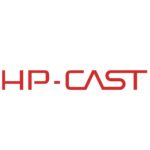“Modern HPC systems do some things very similar to ordinary IT computing, but they also have some significant differences. Two key security challenges are the notions that traditional security solutions often are not effective given the paramount priority of high-performance in HPC. In addition, the need to make some HPC environments as open as possible to enable broad scientific collaboration and interactive HPC also presents a challenge.”
Archives for August 2017
Preliminary Agenda Posted for HP-CAST at SC17 in Denver
HPE has posted the preliminary agenda for HP-CAST at SC17 in Denver. Now open for registration, the event takes place Nov. 10-11 at the Grand Hyatt hotel. “The High Performance Consortium for Advanced Scientific and Technical (HP-CAST) computing users group works to increase the capabilities of Hewlett Packard Enterprise solutions for large-scale, scientific and technical computing. HP-CAST provides guidance to Hewlett Packard Enterprise on the essential development and support issues for such systems. HP-CAST meetings typically include corporate briefings and presentations by HPE executives and technical staff (under NDA), and discussions of customer issues related to high-performance technical computing.”
Video: Introduction to High Performance Computing
Dr. Erwin Laure from the PDC Center for HPC in Sweden presented this talk at the 4th Human Brain Project School in Austria. The 4th HBP School offered a comprehensive program covering all aspects of software, hardware, simulation, databasing, robotics, machine learning and theory relevant to the HBP research program.
Heroes of Deep Learning: Andrew Ng interviews Pieter Abbeel
In this video from the Heroes of Deep Learning series, Andrew Ng interviews Pieter Abbeel from UC Berkeley. “Work in Artificial Intelligence in the EECS department at Berkeley involves foundational research in core areas of knowledge representation, reasoning, learning, planning, decision-making, vision, robotics, speech and language processing. There are also significant efforts aimed at applying algorithmic advances to applied problems in a range of areas, including bioinformatics, networking and systems, search and information retrieval.”
NSF Announces $17.7 Million Funding for Data Science Projects
Today the National Science Foundation (NSF) announced $17.7 million in funding for 12 Transdisciplinary Research in Principles of Data Science (TRIPODS) projects, which will bring together the statistics, mathematics and theoretical computer science communities to develop the foundations of data science. Conducted at 14 institutions in 11 states, these projects will promote long-term research and training activities in data science that transcend disciplinary boundaries. “Data is accelerating the pace of scientific discovery and innovation,” said Jim Kurose, NSF assistant director for Computer and Information Science and Engineering (CISE). “These new TRIPODS projects will help build the theoretical foundations of data science that will enable continued data-driven discovery and breakthroughs across all fields of science and engineering.”
SC17 Exhibition Setting Records
Even though SC17 is still more than two months away, this year’s Exhibition is already setting records.
We are excited to report that we have already smashed the record for both net square feet of exhibit space sold as well as the total number of exhibitors,” says Bronis R. de Supinski, SC17 Exhibits Chair from Lawrence Livermore National Laboratory. “Whether industry or research – if you have anything to do with high performance computing, you need to have a presence at SC17. The SC exhibition floor is an exciting place to discover the latest innovations and make positive career-impacting connections.”
Adrian Cockcroft on how AWS Gives Superpowers to Startups
In this video from AWS Summit in Tel Aviv, Adrian Cockcroft describes how AWS gives Superpowers to Startups. “AWS offers low cost, on-demand IT solutions to help you build and launch your applications quickly and easily with minimum costs. With no upfront investments and a pay-as-you-go price model, you only pay for what you use, when you use it, to build your minimum viable product (MVP), experiment and iterate, all at low cost.”
Rigetti Computing helps Foster Quantum Machine Learning Startup Ecosystem
While practical Quantum Computing remains somewhere in the future, it is already starting to spark new Startup opportunities. “Quantum machine learning will power some of the most impactful and exciting near-term applications of quantum computing. The startups at the CDL are at the leading edge of this technology and will get early access to Rigetti’s general-purpose quantum hardware and to Forest, one of the most sophisticated quantum programming environments in the world,” said Madhav Thattai, Chief Strategy Officer, Rigetti. “We’re looking forward to working with these pioneering individuals and teams to help create and accelerate the quantum application ecosystem.”
OSC Supercomputers Power STEM Learning Across the Globe
The Ohio Supercomputer Center is help teachers like Sultana Nahar, Ph.D. conduct computational workshops as part of her lecture courses. Through physics and STEM courses and workshops, Nahar has been improving the computational skills of the scientific community one person at a time with the hope that more breakthroughs will be made. “One of the most important parts of STEM education and research is computation of parameters for solving real problems,” Nahar said. “It’s not easy to calculate and we need very high accuracy in our results, that can only be achieved through precise computations with high performance computer facilities.”













